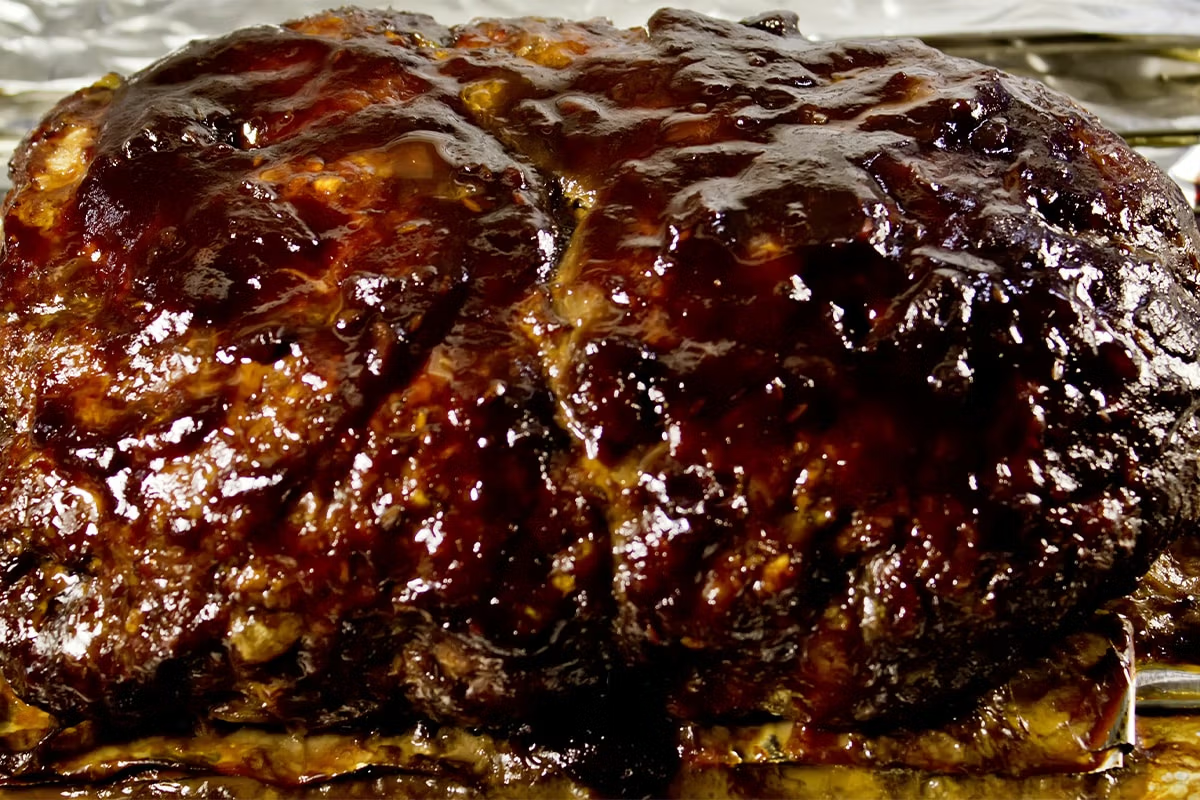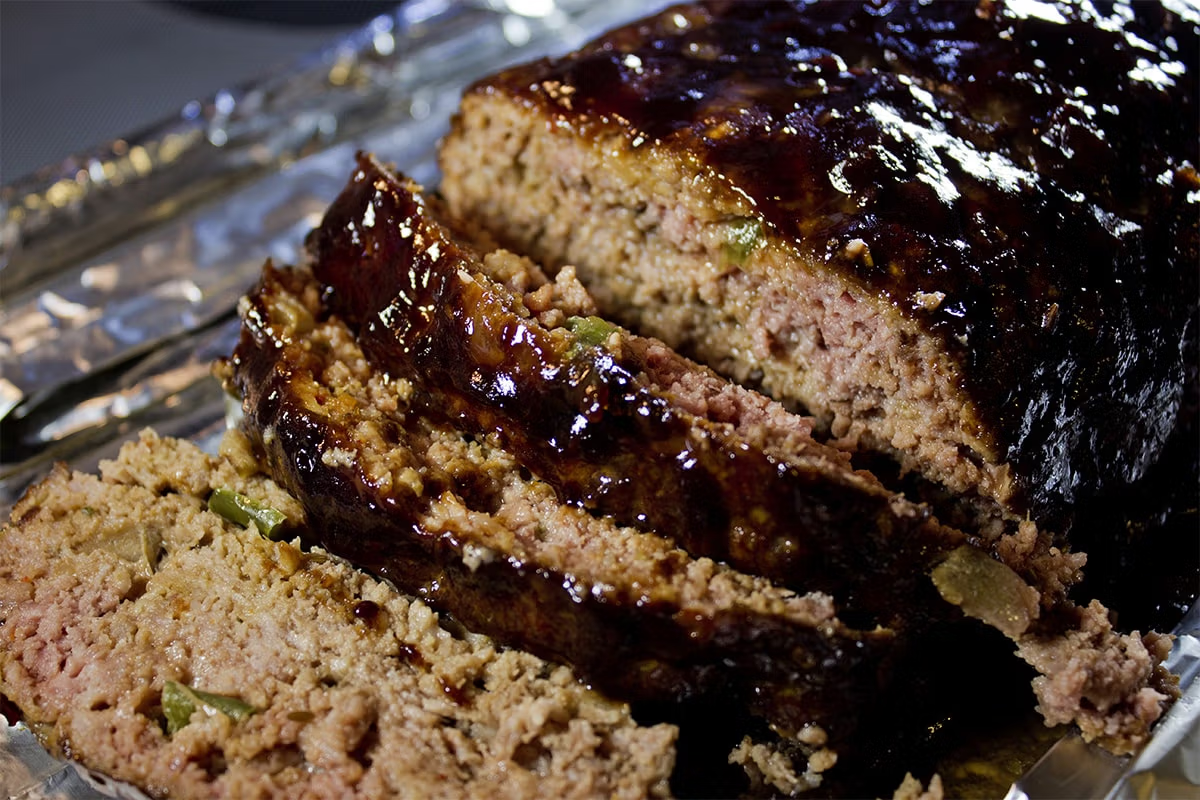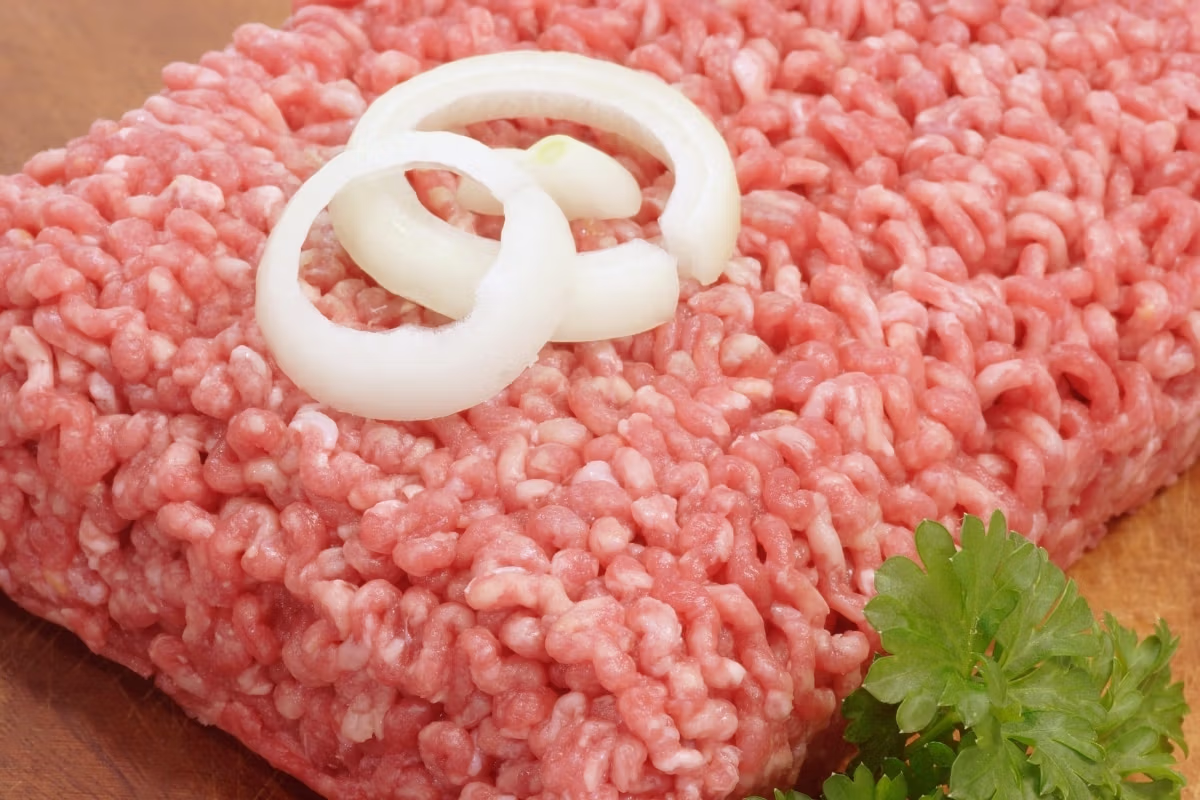Smoking Process
Now, the stage is set for the main event: smoking your meatloaf to perfection. This part of the journey is where patience pays off and flavors develop. Let’s walk through the steps to ensure your meatloaf emerges as a smoky delicacy.
Setting Up Your Smoker
First things first, getting your smoker ready is crucial for a successful smoke. Here’s how to nail the setup.
Temperature and Wood Type
Aim for a steady 240°F (116°C) to envelop your meatloaf in gentle, smoky heat. Hickory wood is a go-to for its robust flavor, but don’t shy away from experimenting with apple or cherry woods for a sweeter touch. The choice of wood can subtly influence the final taste, adding layers of complexity to your meatloaf.
Preparing the Smoker
Ensure your smoker is clean and ready for action. A filled water pan is essential, not just for temperature control but also for adding moisture to the smoke, which helps keep the meatloaf juicy. Once your smoker is humming at the right temperature and emitting fragrant smoke, it’s time for the meatloaf to take center stage.
How to Smoke a Meatloaf

With anticipation building, let’s get down to the smoking details.
Smoking Time and Temperature
Carefully place your meatloaf in the smoker, ensuring it’s positioned for even exposure to the smoke. A consistent, light smoke will caress the meat, infusing it with flavor. The process typically spans 3-4 hours, but the true indicator of readiness is the internal temperature, not the clock. You’re aiming for a safe and perfect 160°F (71°C).
How Long to Smoke a Meatloaf?
Typically, you’re looking at about 3-4 hours in the smoker. However, this can vary based on the size and thickness of your loaf. Patience is key, as the slow cooking process allows the smoke to deeply penetrate the meat.
How Long to Smoke a Meatloaf at 225?
Opting for a lower temperature of 225°F (107°C) extends the cooking time to around 4-5 hours. This slower approach enhances the smoke flavor, making it well worth the wait. Keep a close eye on the internal temperature to gauge doneness.
Checking for Doneness
A reliable meat thermometer is your best friend here. Probe the center of the meatloaf for the target temperature of 160°F (71°C). Once reached, it’s time to remove the meatloaf from the smoker, but the journey doesn’t end here.
The smoking process is a testament to the magic of slow cooking and the transformative power of smoke. By following these steps, you’re not just cooking; you’re creating a smoky masterpiece that’s bound to impress. So, take a moment to bask in the glory of your smoked meatloaf, a true labor of love and patience.
Post-Smoking Steps
As the enticing aroma of smoked meatloaf wafts through the air, signaling the culmination of your culinary efforts, a few final, yet crucial steps stand between you and the ultimate dining experience. Let’s navigate these together to ensure your smoked masterpiece is met with nothing but admiration and eager appetites.
Resting and Serving
Once your meatloaf has been tenderly removed from the smoker, it’s crucial to let it rest. If you’re wondering about covering your Meatloaf when you bake it, check out our guide on cooking meatloaf: covered or uncovered? for more insights.
Resting Your Meatloaf
After your meatloaf has been tenderly removed from the smoker, it’s time for a well-deserved pause. Loosely tent it with aluminum foil and let it sit for about 15-20 minutes. This short break allows the juices, which have been excitedly bubbling away during the cooking process, to redistribute throughout the meat. Consequently, each slice is ensured to be moist and delectable. Neglecting this step could lead to a less than optimal outcome, with all your diligent efforts resulting in a drier meatloaf. Certainly, after such meticulous preparation, that’s the last scenario we’d want.
Slicing and Serving Suggestions
Finally, the moment of truth arrives as you prepare to slice into your creation. Arm yourself with a sharp knife and cut into the rested meatloaf, unveiling the juicy, smoky interior that’s been hours in the making. When it comes to serving, pair your meatloaf with sides that enhance its rich flavor profile. Imagine creamy mashed potatoes, crisp green beans, or a vibrant salad to introduce a touch of freshness. Moreover, for an added flavor dimension, feel free to accompany each slice with a dollop of BBQ sauce, either on the side or drizzled over the top.
And so, the journey from a simple mix of ingredients to a smoky delicacy reaches its glorious conclusion. Your smoked meatloaf, a testament to careful preparation, patience, and culinary alchemy, stands ready to delight. Gather your loved ones around the table, share this labor of love, and revel in the praise. Smoking meatloaf might initially appear as a straightforward task, yet, as we’ve discovered, it’s an art form that yields a dish far more extraordinary than the sum of its parts. So, serve yourself a generous slice, lean back, and relish the smoky splendor of a job exceptionally well done.
Frequently Asked Questions
As we wrap up our smoky culinary adventure, it’s only natural that you might have some lingering questions. After all, smoking meatloaf is as much about understanding the process as it is about mastering the techniques. So, let’s dive into some of the most common queries that might arise, ensuring you’re fully equipped to tackle this dish with confidence.
Can I smoke a meatloaf using an electric smoker?
Absolutely, you can! Electric smokers are fantastic for maintaining consistent temperatures, making them ideal for smoking meatloaf. Just ensure you’re still providing enough smoke to infuse that rich, smoky flavor into the meat. Wood chips designed for electric smokers are readily available and can offer the same depth of flavor as traditional methods.
What are the best woods to use for smoking meatloaf?
Hickory is a classic choice, offering a strong, smoky flavor that complements the richness of the meatloaf. However, don’t hesitate to experiment with milder woods like apple or cherry, which can impart a subtly sweet note to your dish. Mixing woods can also create a unique flavor profile, so feel free to explore and find what best suits your palate.
How do I keep my smoked meatloaf moist?
The key to a moist meatloaf lies in the preparation and cooking process. Using ingredients like buttermilk-soaked bread as a binder can help retain moisture. Additionally, sautéing your vegetables before adding them to the mix can prevent them from drawing moisture out of the meat during the smoking process. Remember, the water pan in your smoker is your friend here, helping to maintain a moist cooking environment.
Can I prepare a meatloaf for smoking ahead of time?
Certainly! Preparing your meatloaf in advance can actually enhance the flavors, as it allows the spices and seasonings more time to meld with the meat. Simply prepare your meatloaf, cover it tightly, and refrigerate. When you’re ready to smoke, let the meatloaf come to room temperature for about 30 minutes before placing it in the smoker. This step ensures even cooking and optimal flavor development.
And there you have it, a comprehensive guide to smoking meatloaf, peppered with insights and tips to navigate any potential hurdles. Smoking meatloaf is not just about following a recipe; it’s about embracing the process and making it your own. So, armed with this knowledge, venture forth and create a smoked meatloaf that’s not only a feast for the taste buds but also a reflection of your culinary journey. Happy smoking!



5 thoughts on “How To Smoke A Meatloaf: Guide for a Smoky Delight”